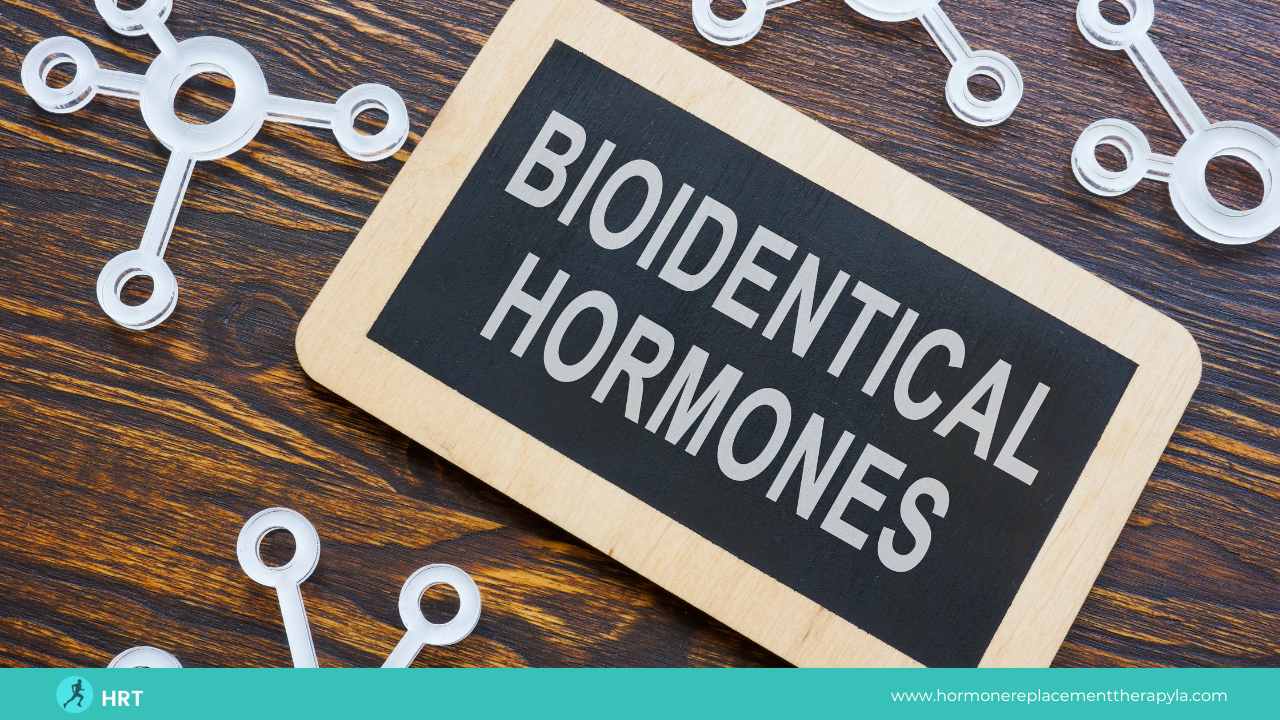Welcome to a deep dive into the world of hormone replacement therapy, specifically focusing on one of its key components: progesterone.
As many navigate through the complexities of hormonal imbalances or seek relief from the symptoms of menopause, the question arises: Can you take progesterone continuously? This blog aims to shed light on this query, offering expert insights into the long-term use of continuous progesterone therapy.
With contributions from seasoned medical professionals and a review of the latest research, we’ll explore the benefits, considerations, and real-world implications of maintaining a steady progesterone regimen.
Whether you’re considering hormone replacement therapy for the first time or seeking to optimize your current treatment plan, our comprehensive guide is here to provide clarity and support on your journey towards hormonal balance and well-being.
Join us as we navigate the ins and outs of continuous progesterone therapy, armed with expert knowledge and evidence-based practices.
Understanding Progesterone in Hormone Replacement Therapy (HRT)
Hormone Replacement Therapy (HRT) is a pivotal treatment for managing symptoms associated with hormonal imbalances or deficiencies commonly encountered during menopause or as part of transgender hormone therapy.
Among the hormones used in HRT, progesterone plays a critical role, especially in women’s health. Understanding its function, benefits, and how it is administered can empower individuals to make informed decisions about their treatment options.
The Role of Progesterone in HRT
Progesterone is a critical hormone in the female reproductive system, crucial for regulating the menstrual cycle and maintaining the early stages of pregnancy. In the context of HRT, progesterone’s primary role is to balance the effects of estrogen.
When estrogen is prescribed without progesterone to women who have not had a hysterectomy, there is an increased risk of endometrial cancer. This risk arises because estrogen stimulates the growth of the lining of the uterus, and without the balancing effect of progesterone, this lining can build up and potentially lead to cancer.
Progesterone counters this by causing the uterine lining to shed, similar to the process that occurs during a menstrual period.
Additionally, progesterone has several benefits that make it a valuable component of HRT:
- Symptom Management: It helps alleviate menopausal symptoms, such as hot flashes and night sweats, when used in combination with estrogen.
- Mood Regulation: Progesterone has a calming effect and can help improve mood swings and reduce anxiety.
- Bone Health: It contributes to bone density maintenance, reducing the risk of osteoporosis.
- Cardiovascular Health: Progesterone may positively affect blood lipid profiles, contributing to heart health.
Cyclical vs. Continuous Progesterone Therapy
Progesterone therapy can be administered in two primary ways: cyclical and continuous. The choice between these methods depends on the individual’s health status, symptoms, and treatment goals.
- Cyclical Progesterone Therapy: In this approach, progesterone is taken for a specific number of days during the menstrual cycle, typically 10 to 14 days each month. This method is often used in perimenopausal women who still have menstrual cycles and in some postmenopausal women in combination with estrogen therapy. The cyclical administration mimics the natural rhythm of the menstrual cycle, leading to a withdrawal bleed similar to a menstrual period. This method benefits individuals who prefer a monthly bleed or those for whom it’s recommended based on their health profile.
- Continuous Progesterone Therapy: With continuous therapy, progesterone is taken daily without breaks, usually alongside estrogen. This approach is often recommended for postmenopausal women who wish to avoid a monthly bleed or for whom a stable hormonal level is deemed beneficial for managing symptoms or health conditions. Continuous therapy is associated with a reduced risk of endometrial hyperplasia and cancer since it continuously counteracts estrogen’s proliferative effects on the uterine lining.
Continuous Progesterone Therapy
Continuous progesterone therapy presents a compelling option for many undergoing hormone replacement therapy (HRT), especially postmenopausal women and those seeking to manage hormonal imbalances more effectively.
The continuous administration of progesterone, particularly when combined with estrogen therapy, offers several advantages, including hormonal balance and symptom management, prevention of endometrial hyperplasia, and an overall improvement in quality of life and well-being.
Hormonal Balance and Symptom Management
One of the primary reasons for continuous progesterone therapy is its role in maintaining hormonal balance. Estrogen and progesterone work in tandem within the female body to regulate various functions.
When estrogen is used alone in HRT, it can lead to an imbalance, potentially exacerbating symptoms such as mood swings, sleep disturbances, and hot flashes. Continuous progesterone therapy helps mitigate these issues by providing a counterbalance to estrogen, ensuring that the hormonal environment remains stable.
This stability is crucial for symptom management. Fluctuations in hormone levels can trigger or worsen menopausal symptoms. Continuous progesterone delivery maintains consistent hormone levels, reducing the incidence and severity of hot flashes, night sweats, and other menopausal symptoms. Moreover, the calming effect of progesterone can help improve sleep quality and mood, contributing to better overall symptom management.
Prevention of Endometrial Hyperplasia
A significant benefit of continuous progesterone therapy is its role in preventing endometrial hyperplasia, a condition characterized by the thickening of the uterine lining, which can be a precursor to endometrial cancer.
Estrogen stimulates the growth of the endometrium, and without the moderating effect of progesterone, this growth can become excessive. Continuous progesterone use ensures a consistent opposing force to estrogen’s proliferative effects on the uterine lining, reducing the risk of hyperplasia and, by extension, the risk of developing endometrial cancer.
Clinical observations and research studies have consistently supported the protective role of progesterone in this context. Women undergoing estrogen therapy who also receive continuous progesterone show significantly lower rates of endometrial hyperplasia compared to those receiving estrogen alone or cyclic progesterone therapy.
Improved Quality of Life and Well-Being
The overarching goal of HRT is to manage physiological symptoms and enhance the overall quality of life and well-being. Continuous progesterone therapy plays a vital role in this aspect.
By providing hormonal balance and reducing the physical discomforts of menopause, it allows individuals to maintain their lifestyle and daily activities without the constant interruption of menopausal symptoms.
Furthermore, the psychological impact of continuous progesterone therapy cannot be understated. The alleviation of mood swings, anxiety, and depressive symptoms contributes significantly to an improved sense of well-being.
Patients often report feeling more emotionally stable and experiencing greater control over their lives, which is a critical component of overall health and happiness.
Expert Insights into Long-Term Continuous Progesterone Therapy
Long-term continuous progesterone therapy is a topic of considerable interest and study within the field of hormone replacement therapy (HRT).
The insights from medical professionals and the findings from recent research shed light on the implications, benefits, and considerations of this treatment approach over an extended period. These insights are pivotal for clinicians and patients in making informed decisions about long-term HRT strategies.
Summary of Recent Research Findings
Recent studies have explored the effects of continuous progesterone therapy, especially in conjunction with estrogen, over the long term.
A consistent finding across these studies is the role of continuous progesterone in mitigating the risk of endometrial cancer associated with estrogen therapy.
Research published in major medical journals indicates that the combined continuous regimen significantly reduces this risk compared to estrogen-only therapies or cyclical progesterone approaches.
Another area of research has focused on the cardiovascular implications of long-term progesterone use. Initial concerns about potential adverse effects on heart health have mainly been mitigated by studies showing that when properly balanced with estrogen, continuous progesterone does not increase the risk of cardiovascular diseases and may, in fact, offer protective benefits against hypertension and cholesterol imbalances.
Bone health is another critical area impacted by long-term continuous progesterone therapy. Studies have demonstrated that this treatment can help maintain bone density and reduce the risk of osteoporosis and fractures in postmenopausal women.
Expert Opinions and Clinical Observations
Medical professionals with extensive experience in HRT emphasize the importance of individualized treatment plans when considering long-term continuous progesterone therapy. They highlight several vital observations and outcomes from their clinical practice:
- Individual Response Variation: Experts note that responses to continuous progesterone therapy can vary significantly among individuals. Some patients experience profound improvements in quality of life, symptom management, and psychological well-being, while others may encounter challenges in adjusting to the therapy.
- Importance of Monitoring: Long-term therapy necessitates ongoing monitoring to adjust dosages and address any side effects or health changes. Physicians stress the value of regular check-ups and open communication between patients and healthcare providers to ensure the therapy remains effective and safe over time.
- Patient Outcomes: Clinicians report positive outcomes in many patients on continuous progesterone therapy for extended periods. These include sustained relief from menopausal symptoms, improved mental health, and a decrease in the incidence of conditions associated with estrogen dominance, such as endometrial hyperplasia.
- Holistic Health Benefits: Beyond the direct effects of hormone balance, experts observe that continuous progesterone therapy often leads to broader health and lifestyle benefits. Patients report better sleep patterns, increased energy levels, and enhanced overall well-being, contributing to a more active and fulfilling life post-menopause.
Pros of Continuous Progesterone Therapy
Continuous progesterone therapy, especially when combined with estrogen in hormone replacement therapy (HRT), offers a range of benefits that have been well-documented through clinical practice and research.
These benefits address the direct symptoms associated with hormonal imbalances or deficiencies and contribute to the long-term health and well-being of individuals undergoing treatment.
Here, we explore the significant advantages of continuous progesterone therapy, including consistent symptom relief, reduced risk of certain health conditions, and its positive effects on sleep, mood, and bone density.
Consistent Symptom Relief
One of the most immediate and appreciated benefits of continuous progesterone therapy is the consistent relief of symptoms associated with menopause and hormonal imbalance. Unlike cyclical therapy, which can lead to fluctuations in hormone levels and symptom intensity, continuous use maintains a steady level of progesterone.
This stability helps to effectively manage and reduce hot flashes, night sweats, and vaginal dryness. Continuous therapy also alleviates the severity of menstrual irregularities for those in perimenopause, providing a smoother transition to menopause.
Reduced Risk of Certain Health Conditions
- Endometrial Cancer: Continuous progesterone therapy is particularly beneficial in reducing the risk of endometrial cancer in women who are also taking estrogen as part of their HRT. Estrogen stimulates the growth of the uterine lining, and without the balancing effect of progesterone, this can lead to endometrial hyperplasia and, potentially, cancer. Continuous progesterone counters this effect by ensuring the lining is regularly shed, significantly lowering the risk of developing endometrial cancer.
- Breast Cancer: There is ongoing research into the impact of continuous progesterone therapy on breast cancer risk. Some studies suggest that when combined with estrogen, the use of natural progesterone (as opposed to synthetic progestins) might not increase and could potentially reduce the risk of breast cancer. However, more research is needed in this area.
Potential Positive Effects on Sleep, Mood, and Bone Density
- Sleep Quality: Progesterone is known for its sedative effects, which can significantly improve sleep quality. Continuous progesterone therapy helps regulate sleep patterns, making it easier to fall and stay asleep. This improvement in sleep contributes to better overall health and well-being.
- Mood Regulation: Progesterone has a calming effect on the brain, which can help in managing mood swings, anxiety, and depression, often experienced during hormonal fluctuations. Continuous therapy ensures that these mood-regulating benefits are consistently maintained, improving mental health and quality of life.
- Bone Density: Progesterone plays a role in bone metabolism, working alongside estrogen to maintain bone density. Continuous therapy can help in preventing bone loss associated with menopause, reducing the risk of osteoporosis and fractures. This protective effect on bone health is significant for postmenopausal women at increased risk for osteoporosis.
Cons of Continuous Progesterone Therapy
While continuous progesterone therapy offers numerous benefits, it is also associated with certain downsides and challenges that need to be carefully considered by healthcare providers and patients. Understanding these potential drawbacks is crucial for making an informed decision about hormone replacement therapy (HRT).
Here, we delve into the cons of continuous progesterone therapy, including common side effects, the necessity for careful monitoring and dosage adjustments, and the possible long-term health implications that are still under investigation.
Common Side Effects
Continuous progesterone therapy, like any medication, can cause side effects in some individuals. These effects vary widely among patients, depending on individual sensitivity to hormones, the dosage, and the form of progesterone used. Common side effects include:
- Bloating and Water Retention: Progesterone can cause the body to retain water, leading to feelings of bloating and weight gain. This can be uncomfortable and may affect a patient’s sense of well-being.
- Breast Tenderness: Some individuals may experience tenderness and swelling in the breasts, a side effect ranging from mild to severe.
- Mood Swings and Depression: Although progesterone is generally associated with mood stabilization, some people may experience mood swings, irritability, or depressive symptoms, especially when starting therapy or adjusting doses.
- Headaches and Fatigue: Some patients undergoing continuous progesterone therapy report headaches and a general sense of fatigue.
The Need for Careful Monitoring and Dosage Adjustments
- Individual Response Variability: The way individuals respond to hormone therapy can vary significantly, necessitating personalized treatment plans. Continuous progesterone therapy requires ongoing monitoring to ensure optimal results and minimize side effects.
- Dosage Adjustments: Finding the right balance of hormones is critical for the success of HRT. Patients may need several dosage adjustments before finding the right level that manages symptoms effectively without causing adverse effects.
- Regular Health Assessments: Continuous progesterone therapy necessitates regular health assessments to monitor its impact on the body, including liver function tests, blood pressure, and potentially the endometrial lining, among others.
Possible Long-Term Health Implications
The long-term health implications of continuous progesterone therapy are still a subject of research, with studies ongoing to understand its impact over extended periods fully.
- Cardiovascular Health: While some research suggests progesterone may have a neutral or potentially beneficial effect on heart health, the long-term impact, especially in combination with estrogen, continues to be studied for any cardiovascular risks.
- Breast Cancer Risk: The relationship between continuous progesterone therapy and breast cancer risk remains complex and under investigation. While progesterone is thought to be safer or neutral in terms of breast cancer risk compared to synthetic progestins, definitive long-term data is still being gathered.
Impact on Other Conditions: There is ongoing research into how continuous progesterone therapy affects other conditions, such as blood clot risks, lipid profiles, and diabetes management.






